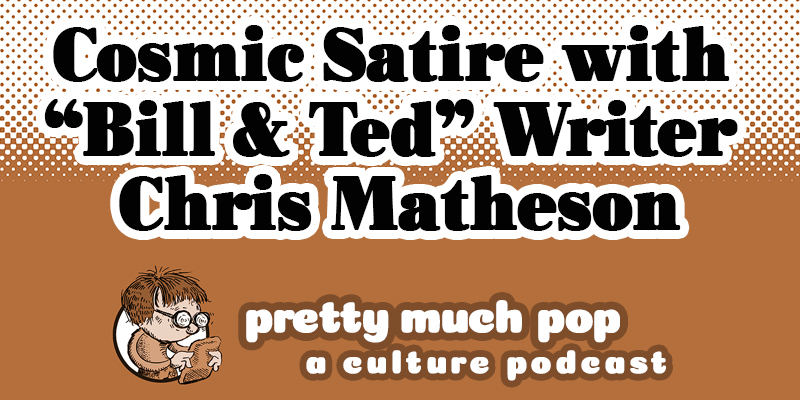If you will forgive a gross oversimplification, there are two kinds of people in this world:
Those (like me) who, having seen Fast Times at Ridgemont High the night before the first day of their senior year of high school, made sure to pack carrots in their lunchboxes, and those who were too young to see it in its original release, possibly because they hadn’t been born yet.
For those of us in the first group, Feelin’ A‑Live’s #FastTimesLive, a virtual table read of the script for Cameron Crowe’s 1982 semi-autobiographical teen sex romp, is a bit of a tough sell, even as a fundraiser for two good causes: the COVID-19 relief organization CORE and REFORM Alliance, which is dedicated to criminal justice reform and staunching COVID-19’s spread within the incarcerated population.
It’s kind of a mess.
Possibly we’re just crabby from all the Zoom performances we’ve watched and taken part in over the last 6+ months.
Were we supposed to be charmed that this live, unrehearsed performance featured A‑list movie stars, bumbling through like regular Joes circa April 2020?
Ray Liotta, reprising the late Ray Walston’s authority figure, Mr. Hand, is hamstrung by his old school paper script, ensuring that most of his lines will be delivered with downcast eyes.
Julia Roberts, as 15-year-old heroine, Stacy, is winsomely fresh, but out of focus.
Is it this blurriness of the technical difficulties that caused the production, originally conceived of as a feature-length table read, to be re-packaged as a sort of highlights tribute?
(Roberts’ computer glitch appears to have been cleared up after organizer Dane Cook’s first interruption to encourage donations (currently standing at a $2,132, which is particularly disappointing given that the film took in $2,545,674 its opening weekend, in 1992.))
Jennifer Aniston, in the role originated by Seventeen model, Phoebe Cates, is predictably funny, and also brings professional quality make up and lighting to the proceedings, but it’s somehow unjust that her celebrity status excuses her face-obscuring hairdo. Actresses of her generation, lacking her star power, plying their trade on Zoom are invariably ordered to barrette up.
The technical problems were not enough to spare us from a reenactment of the film’s most notorious scene, in which Stacy’s older brother, originally played by Judge Reinhold, now brought to life by Anniston’s ex, Brad Pitt, fantasizes about Cates unclasping her bikini top, only to be barged in on enjoying an extremely private moment by the very object of those fantasies.
It’s at the 37 minute mark, FYI.
A fitting punishment for those of us who, remembering the tabloid headlines, eagerly focused on Aniston’s face as Pitt was being introduced.
It wouldn’t hold a candle to the now-problematic original, if Pitt weren’t blushing and Morgan Freeman weren’t reading the stage directions.
(“Do you want me to use my Lorne Greene sonorous voice or just read like I’m not here?”)
Many viewers picked up on the players’ seemingly cool reception of their castmate, Method actor, Shia LaBeouf, born four years after the original film’s release. In the role of surfin’ stoner, Jeff Spicoli, he was tasked with some very big shoes to fill.
It’s a tribute to original Spicoli, activist Sean Penn’s versatility that he wasn’t forever typecast as variants on his star making role. As the only member of the original cast in attendance (as well as the founder of one of the designated charities), he alone seems to be enjoying the hell out of LaBeouf’s scene stealing antics.
Writer Crowe and director Amy Heckerling dish on his audition at the end of the proceedings, and in so doing shed some light on LaBeouf’s eccentricities, and the others’ wariness.
Even though the story conflicts, somewhat, with the casting director’s recollection below, we’re willing to take it on faith that LaBeouf’s fellows’ failure to clap for him is as much a part of the joke as Pitt’s game use of iconic headgear.
Dane Cook hedged his bets in deference to those who may not have lived through the period parodied by the film:
One more thing, before we start, the big disclaimer with a capital D, a whole lot of beliefs and language have changed since this came out, so don’t @ us, unless it’s to donate. Remember, it was a certain time and place, and the sentiments in the script do not reflect the people reading it today. They do reflect the fictional characters from an imaginary school in a totally make believe story, got it?
We get it!
The recasting with actors the same age as Jennifer Jason Leigh (Stacy) and Phoebe Cates remains a bitter pill, but perhaps it spares us all comments fixating on the ravages of time. Instead, we get to hear about the “timeless” beauty of Anniston and Roberts.
Related Content:
Deleted Scene from Almost Famous: Mom, “Stairway to Heaven” is Based on the Literature of Tolkien
1980s Metalhead Kids Are Alright: Scientific Study Shows That They Became Well-Adjusted Adults
10 Tips From Billy Wilder on How to Write a Good Screenplay
Ayun Halliday is an author, illustrator, theater maker and Chief Primatologist of the East Village Inky zine. Follow her @AyunHalliday.









